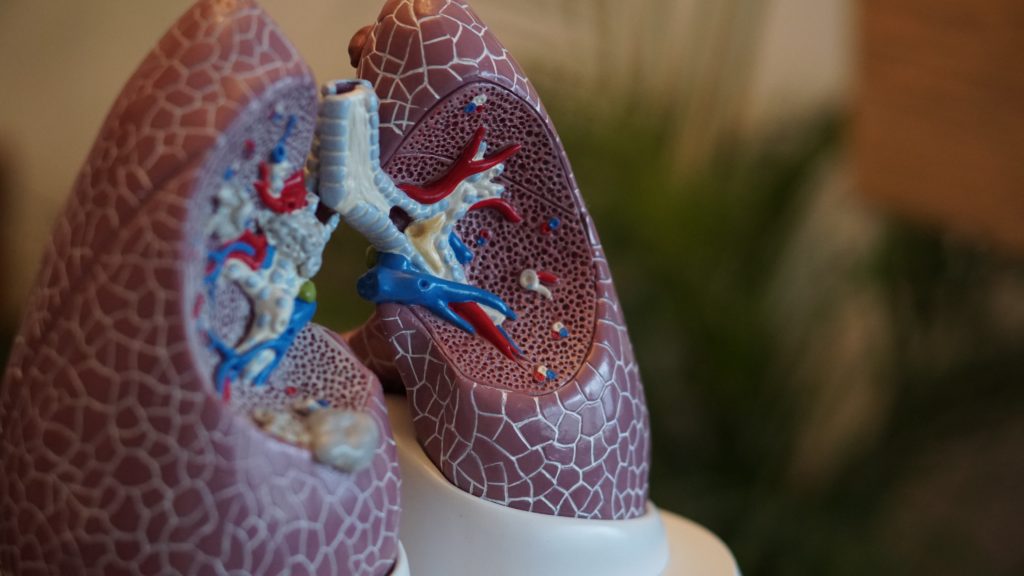
Lung Cancer is a deadly disease. Until recently, a chest X-ray, often used only after patients developed symptoms, discovered the disease when it was in its late stages. Over the past few years, however, an effective and safe screening test has been developed and those who are at high risk for lung cancer can now be screened annually using low-dose spiral CT scans.
FACT 1: Each year over 250,000 people in the United States are newly diagnosed with lung cancer.
FACT 2: 90% of individuals who have lung cancer will eventually die of the disease, making lung cancer the most deadly cancer in the United States for both men and women.
FACTS 3: 85% of all lung cancers are caused by smoking.
FACT 4: According to the Pennsylvania Department of Health, 22% of people aged 18 years and older residing in Northeastern, PA smoke.
FACT 5: The best prevention measures are; not smoking or using tobacco products, and avoid second-hand smoke or high air pollution environments.
One of the reasons for the high mortality rate in lung cancer is that the disease is often not discovered until it is advanced and treatment options are limited. Some of the most common signs and symptoms of lung cancer are easily mistaken either for a mild illness or for things such as “smoker’s cough”. By the time many patients are diagnosed, their disease is advanced and may involve lymph nodes or other organs.
For some cancers, there are established screening tests that help to identify these cancers at an earlier stage. For example, routine screenings through colonoscopies, mammograms, and pap smears are well established and have saved thousands of lives. Historically, lung cancer has not had such a screening test. This however, is about to change. This past summer, the United States Preventative Task Force (USPTF), an independent committee charged by congress to evaluate the most current data and make recommendations for disease screening, released a draft of a new proposal for a lung cancer screening test.
The USPTF now recommends that all persons who are at high risk for lung cancer should be screened annually using low-dose spiral CT scans. High risk persons are identified as those who are between the ages of 55 and 79, who have a history of 30 pack years or more of smoking, and who are either still smoking or who have quit within the last 15 years. A “pack year” is defined as smoking 1 pack of cigarettes a day for a year. For example, a person could have 30 pack years of smoking if they smoke 1 pack of cigarettes a day for 30 years. Similarly, they could have a 30 pack year history by smoking 2 packs of cigarettes a day for 15 years.
CT, or computed tomography, scans are a form of three-dimensional imaging used by clinicians to visualize the organs and other anatomy of patients. The scan can detect abnormalities on a patient’s lung with much earlier and with greater sensitivity than an x-ray. Much like a mammogram, low-dose CT scans do not diagnose cancer but are a way to identify patients with abnormalities that need to be investigated further for the possibility of cancer. This new screening test will allow physicians to see possibly cancerous abnormalities of the lung before the disease can spread and become impossible to cure. The scan is non-invasive and generally considered very safe. Low-dose CT scans carry about 5 times less radiation than traditional high-dose CT scans and are equivalent to about 15 x-rays.
It is projected that this new screening practice will save the lives of between 15 and 20% of those diagnosed with lung cancer by detecting cancers before they can progress to the point that they are resistant to medical treatment. The draft of the new proposal for lung cancer screening that the USPTF released this summer was based off of a landmark article in The New England Journal of Medicine in 2011. Once the final document is published, clinicians will be encouraged to adopt these screening practices and insurance companies will use these recommendations to adopt their policies regarding coverage for testing.
While this screening is a major step in the detection and treatment of lung cancer, it is not a substitute for quitting smoking. The best proven methods to prevent lung cancer and its deadly consequences is to not smoke, use other tobacco products, and avoid exposure to second-hand smoke.
If you or a loved one need help quitting tobacco products, you may contact your physician or call 1-800-QUIT-NOW or visit www.lung.org. For more information on the new lung cancer screening guidelines visit: www.cdc.gov
NOTE: These signs and symptoms can be attributed to many different causes and are not exclusive to lung cancer. Always discuss your symptoms with your physician.
Patients who fit all of the below criteria:
*A pack year is defined as 1 pack of cigarettes per day for a year
Medical Contributor: Sarah Bashaw, MD is a graduate of TCMC (presently GCSOM).
Medical Reviewer: Greg Cali, DO, Pulmonologist, Dunmore, PA

Read “Health & Exercise Forum” – Every Monday. This article is not intended as a substitute for medical treatment. If you have questions related to your medical condition, please contact your family physician. For further inquires related to this topic email: drpmackarey@msn.com
Paul J. Mackarey PT, DHSc, OCS is a Doctor in Health Sciences specializing in orthopaedic and sports physical therapy. Dr. Mackarey is in private practice and is an associate professor of clinical medicine at GCSOM.
For all of Dr. Mackarey's articles visit: mackareyphysicaltherapy.com/forum/